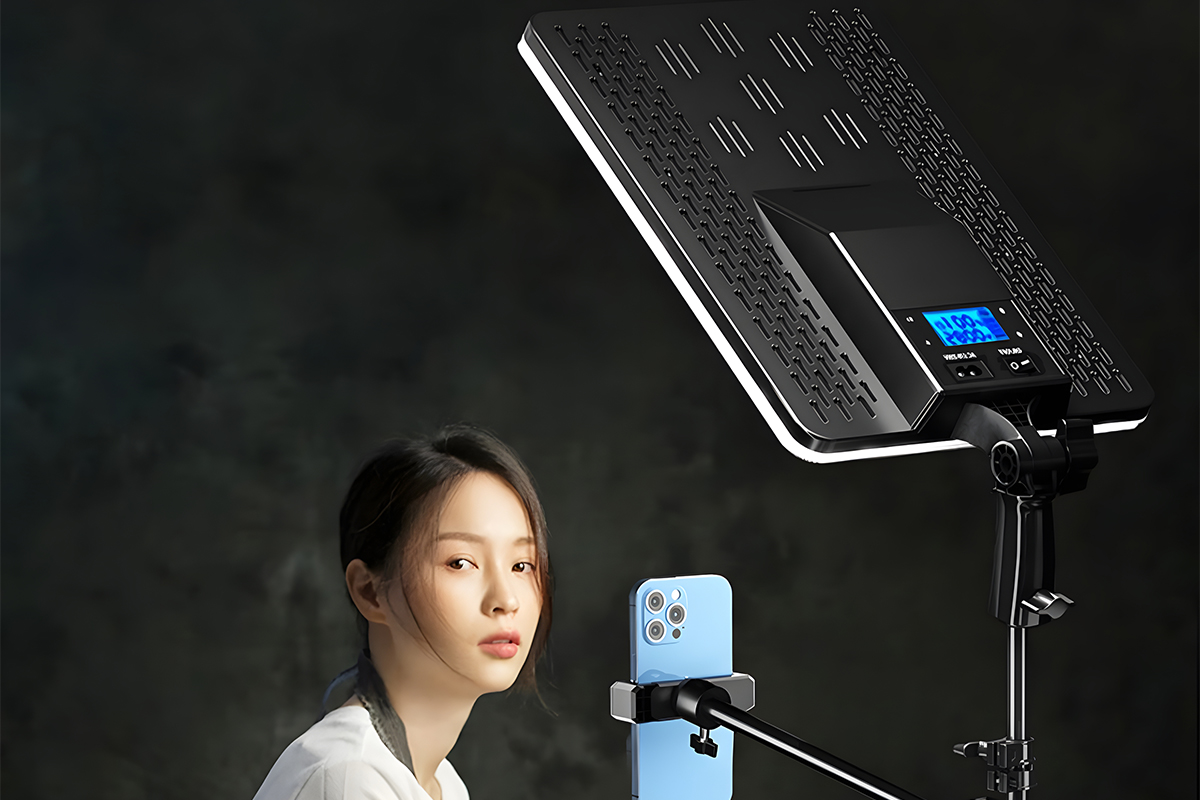
LED panel lights are designed to produce even and consistent illumination across their surface. This uniformity is crucial in photography and video production to avoid uneven lighting and unwanted shadows. Uniform illumination ensures that the entire scene or subject is well-lit without distinct hotspots or dark areas. This feature is particularly important for achieving a professional and polished look in visual content. LED panel lights are versatile tools in video production, serving multiple essential lighting needs. Their applications range from providing key and fill lighting to creating specific moods and effects, contributing significantly to the overall quality and visual appeal of video content. LED panels are often designed to be slim and lightweight, facilitating ease of installation and portability. Ideal for on-location shoots, LED panel lights provide flexibility in adapting to different environments, both indoors and outdoors, contributing to the versatility of video production setups.
The versatility of LED panel lights makes them suitable for a wide range of creative applications. Photographers and videographers can use them to achieve specific lighting styles and effects, contributing to the visual storytelling of their projects. LED panel lights are often used as the primary or key light source in video production setups. Key lighting helps define the subject's features and provides the primary source of illumination in the scene. LED panels can serve as fill lights to reduce shadows created by the key light. By adjusting the intensity of the fill light, videographers can control the contrast in the scene, ensuring that details in shadow areas are visible without overpowering the key light. LED panels are employed as backlighting to separate the subject from the background. Placed behind the subject, backlighting adds depth to the scene, creating a highlight around the subject's edges and enhancing visual separation from the background. LED panels are integral to the classic three-point lighting setup. Used for key, fill, and backlighting, this setup provides balanced and aesthetically pleasing illumination, contributing to a professional and polished look in interviews, films, and other video productions. LED panels with diffusion options are used to create soft and flattering light for portrait shots. The diffused light helps reduce harsh shadows on the subject's face, resulting in a more even and pleasing illumination, particularly in close-up shots.
LED panel lights come in various types and configurations, each designed to serve specific purposes in photography and video production. Edge-lit LED panels provide a sleek design with LEDs positioned along the edges, resulting in a softer and more diffused light. These LED panels are used in portrait photography, interviews, and scenarios where a softer and evenly distributed light is desired. Back-lit LED panels are known for high optical efficiency. They are versatile and commonly used for general lighting in both photography and video production setups. LED panels with a grid or honeycomb pattern serve as valuable tools for photographers and videographers seeking to control light spill, achieve focused and directional lighting, and enhance their creative control over lighting setups. Bi-color LED panels offer adjustable color temperature, allowing users to switch between warm and cool tones. These panels have dual-color LEDs, typically in daylight (cool) and tungsten (warm) options. Tunable white LED panels can transition smoothly between warm and cool color temperatures. The ability to control both the color temperature and intensity of light allows for the creation of specific moods and atmospheres in photography and video. This is especially valuable in narrative filmmaking, where lighting contributes significantly to the storytelling process. RGB LED panels provide a spectrum of colors, allowing for creative and dynamic lighting effects. These LED panels are used for accent lighting, background effects, and creative lighting setups in both photography and video production.
The specific type of LED panel lights selected for photography and video production will depend on the intended use, desired features, and the creative requirements of the project. LED panel lights should produce a uniform and soft light output, minimizing harsh shadows and providing even illumination. This is particularly important for portrait photography and video shoots where flattering and consistent lighting is desired. LED panel lights used in photography and video production must provide accurate color reproduction. In video production, accurate color representation is essential for maintaining visual consistency across different shots and scenes. A higher television lighting consistency index (TLCI) implies that the lighting conditions are more accurately reproduced by the camera's sensor. As a result, the camera is better able to capture and represent the true colors of the scene, leading to a higher fidelity image. LED panel lights should operate without flicker, ensuring smooth and consistent lighting that doesn't interfere with the frame rate of video cameras. Color uniformity in LED panel lights reduces the need for extensive color correction during post-production. When the light emitted by the panels is consistent, photographers and videographers spend less time adjusting colors in editing software to achieve a balanced and cohesive look. When multiple LED panel lights are used together, maintaining color uniformity ensures that all lights contribute consistently to the overall lighting setup.















































